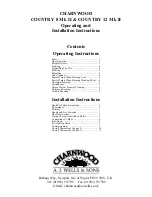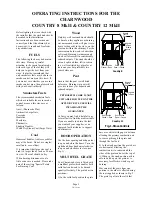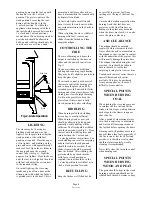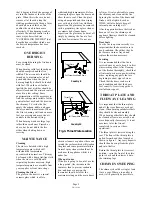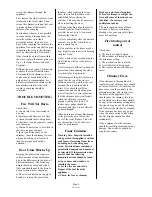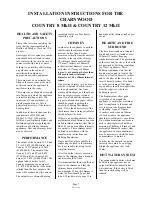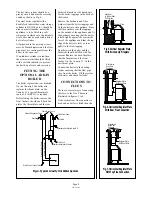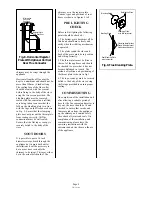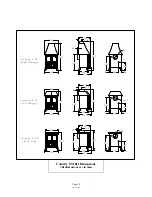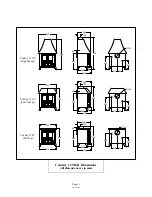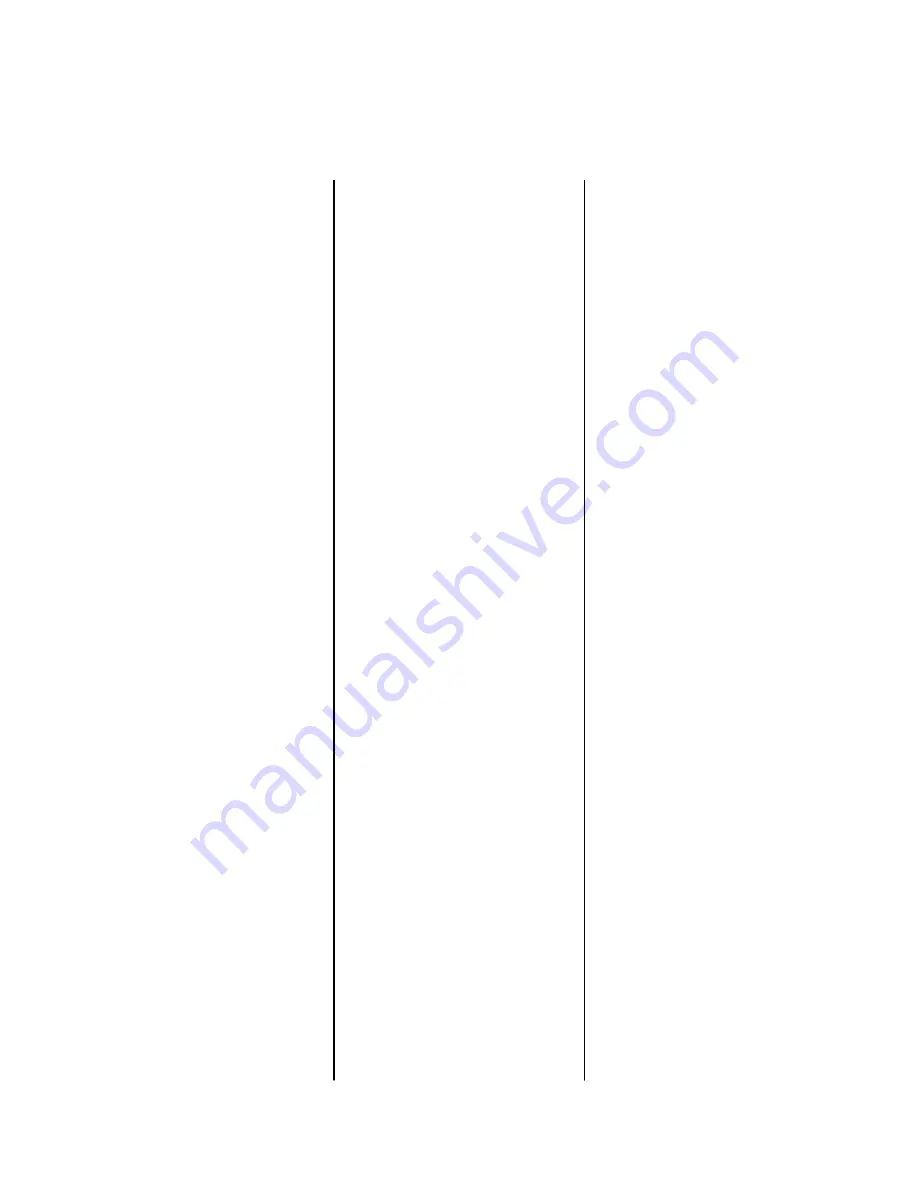
HEALTH AND SAFETY
PRECAUTIONS
Please take care when installing the
stove that the requirements of the
Health and Safety at Work Act 1974
are met.
Some types of fire cement are caustic
and should not be allowed to come
into contact with the skin. In case of
contact wash with plenty of water.
If there is a possibility of disturbing
any asbestos in the course of
installation then please use
appropriate protective equipment.
There must not be an extractor fan
fitted in the same room as the stove
as this can cause the appliance to
emit fumes into the room.
There must be an adequate air supply
into the room in which the appliance
is installed totalling at least 100
square cm. (16 square inches) to
provide combustion air. This is
particularly necessary if the room is
double glazed.
In addition to these instructions the
requirements of BS.8303 and
BS.6461 Pt 1&2; 1984 must be
fulfilled. Local Authority Bylaws and
Building Regulations regarding the
installation of Solid Fuel burning
appliances, flues and chimneys must
also be observed.
PERFORMANCE
The output of the Country 12 LC and
FT is 12.0 kW (40,900 Btu/h), the
Country 12 HC output is 12.5kW
(42650 Btu/h). The output of the
Country 8 LC and FT is 8.0 kW
(27,300 Btu/h) the Country 8 HC
output is 8.5 kW (29,000 Btu/h). The
optional add-in boilers for all
Country models have an output of
2.9 kW (10,000 Btu/h), if the boiler
is fitted then the heat output to the
room will be reduced by this amount.
The outputs were obtained burning
smokeless fuel over a four hourly
re-fuelling cycle.
CHIMNEY
In order for the appliance to perform
satisfactorily the chimney height
must not be less than 4 metres
measured vertically from the outlet of
the stove to the top of the chimney.
The chimney should preferably be
175 mm (7 inches) or 200mm (8
inches) internal diameter or square
with sides of 175mm or 200mm
internally and
must not be less than
150 mm (6 inches) internal
diameter or 150 x 150mm internal
square
.
If an existing chimney is to be used it
must be swept and checked, it must
be in good condition, free from
cracks and blockages, and should not
have an excessive cross sectional
area. If you find that the chimney is
in poor condition then expert advice
should be sought regarding the
necessity of having the chimney
lined. If it is found necessary to line
the chimney then a lining suitable for
Solid Fuel must be used.
If there is no existing chimney then a
prefabricated block chimney or a twin
walled insulated stainless steel flue to
BS.4543 can be used either internally
or externally. These chimneys must
be fitted in accordance with the
manufacturers instructions and
Building Regulations.
Single wall flue pipe is suitable for
connecting the stove to the chimney
but is not suitable for using for the
complete chimney.
If it is found that there is excessive
draw in the chimney then a draught
stabilizer should be fitted.
It is important that there is sufficient
draw in the chimney and that the
chimney does not suffer from
down-draught. When the chimney is
warm the draw should be not less
than 0.10 inches water gauge. If in
doubt about the chimney seek expert
advice.
HEARTH AND FIRE
SURROUND
The stove must stand on a fireproof
hearth and must be situated at least
300mm (12 inches) from any
combustible material. The positioning
of the stove and the size of the hearth
are governed by building regulations
for Class 1 appliances. These
building regulations state that the
hearth must extend in front of the
stove by at least 300mm (12 inches)
and to the sides of the stove by at
least 150mm (6 inches). If in doubt
as to the positioning of the stove
expert advice should be sought either
from the supplier or the local
building inspector.
The fireplace must allow good
circulation of air around the
appliance to ensure that maximum
heat is transferred to the room and
also to prevent the fireplace from
overheating. A gap of 150mm
(6 inches) each side and 300mm
(12 inches) above the appliance
should give sufficient air circulation.
If a wooden mantelpiece or beam is
used in the fireplace it should be a
minimum of 460mm (18 inches), and
preferably 600mm (24 inches) from
the appliance. In some situations it
may be necessary to shield the beam
or mantelpiece to protect it.
In order for the airwash to operate
correctly there must be an air gap
behind the appliance of at least
25mm.
HOT WATER SYSTEM
The optional add-in boiler which may
be fitted in the appliance has an
output sufficient for domestic hot
water heating. If the boiler is fitted
then the room heating will be
reduced.
INSTALLATION INSTRUCTIONS FOR THE
CHARNWOOD
COUNTRY 8 MkII & COUNTRY 12 MkII
Page 7
TW16 3/99


